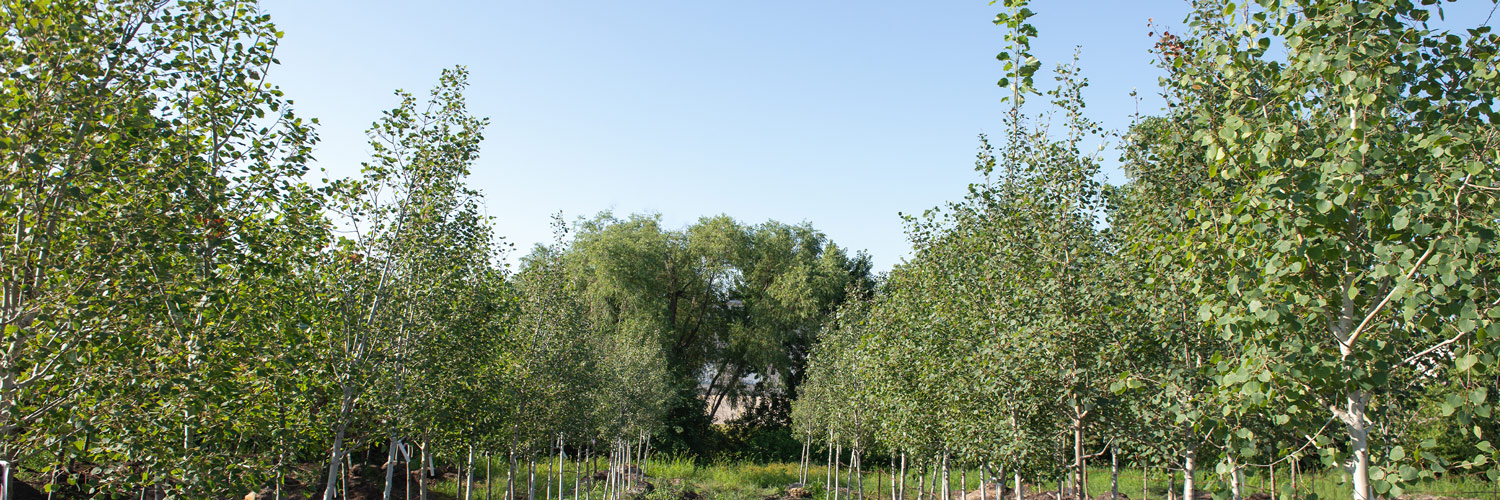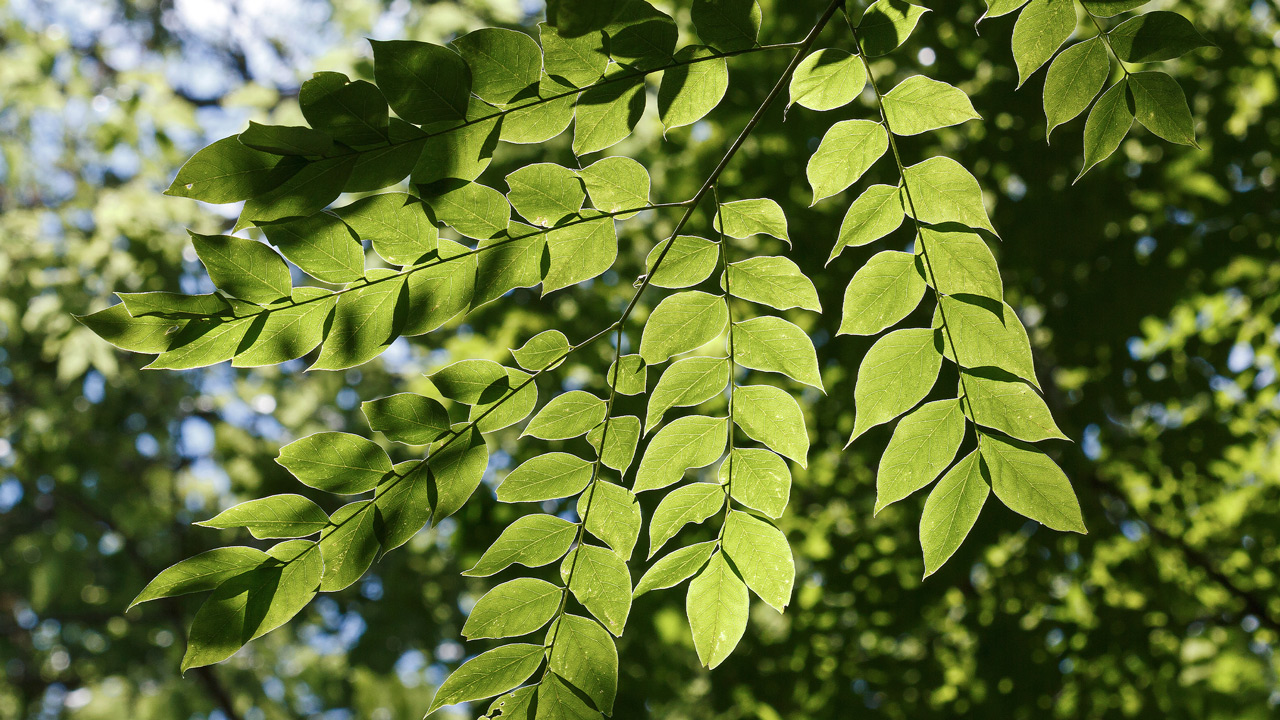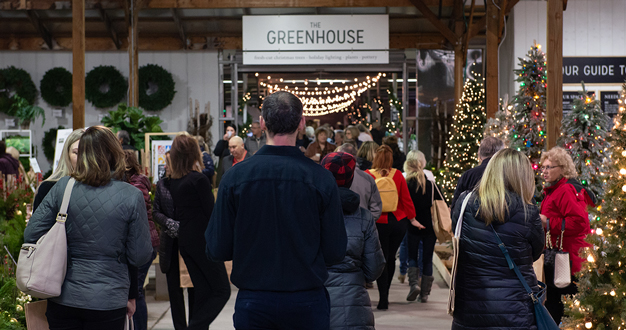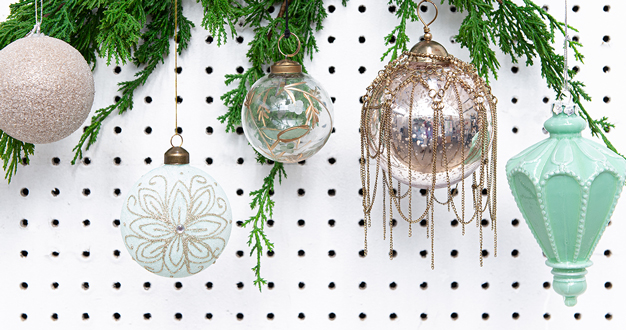
Trees have a way of bringing enormous value to any outdoor space. But native trees in particular benefit their local communities in some specific and meaningful ways. If you’d like to add a new tree to your landscape and aren’t sure where to start, consider looking at native trees first. Here we share a few of our favorites from the Great Plains and why we think they’re some of the best.
Why Native Trees
As a group, native plants, which have naturally evolved in our region, contribute in more meaningful ways to our local ecosystem than non-native species do. That’s largely due to their support of important native insects, which are a critical food source for birds and other wildlife. Native trees serve as the primary or exclusive host to a large number of moths, butterflies, and other insects who rely on these plants for food, shelter, reproduction, and hibernation. And because they’ve evolved together over millions of years, the production of flowers, fruit, and seeds from native trees is timed perfectly with the life cycle of the insects and other animals looking for those resources.
In addition to their vital role in the natural food web, native trees are adapted to the climate they’ve evolved in. Planted in the right spot for light and moisture, they tend to withstand Mother Nature’s extremes better than non-native selections. Once established, they’re quite independent, requiring less attention in the form of added water, pruning, staking, and other landscape maintenance tasks. And because they’ve also evolved along with the potentially more destructive insects in their environment, they have their own effective defenses against them too.
Plant cultivars that come from native parents typically provide similar benefits. And with traits like greater disease-resistance or compact form, they’re often a good solution for unique landscape goals.
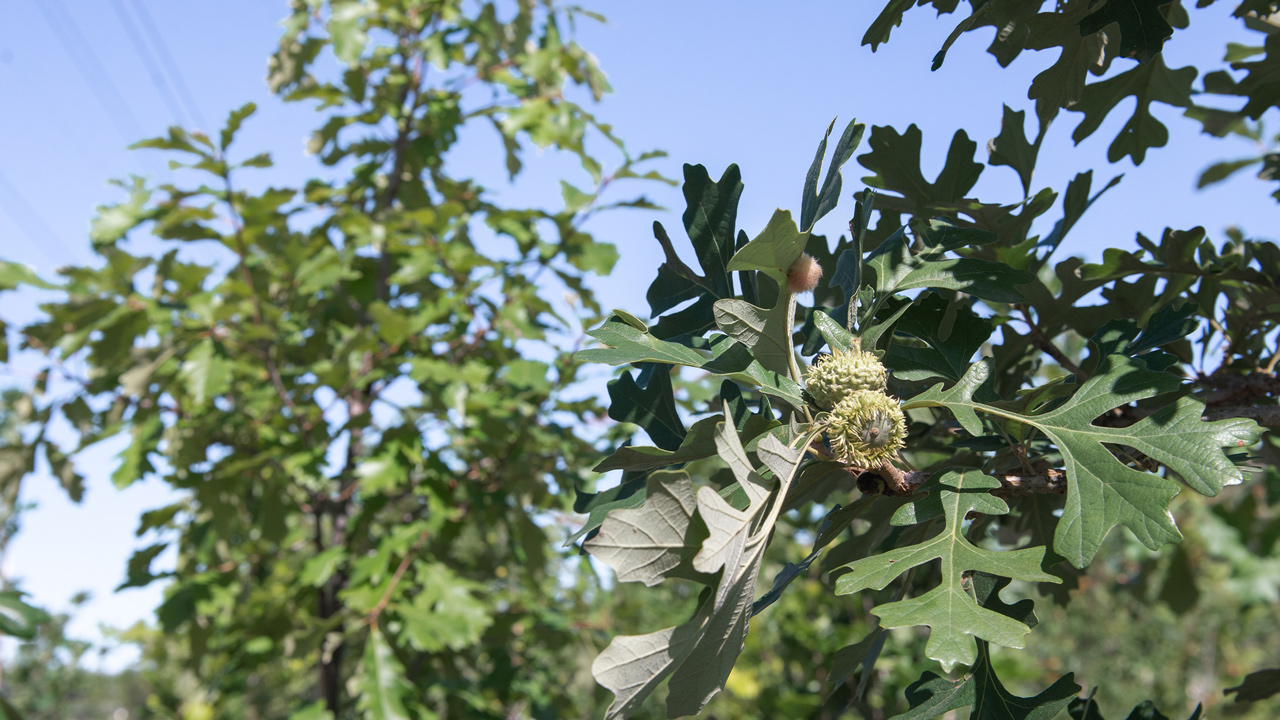
Oaks
40-80 ft // full sun
The American Bird Conservancy quotes entomologist Douglas Tallamy when he says that “oaks are the quintessential wildlife plant: no other genus supports more species of Lepidoptera [butterflies and moths], thus providing more types of bird food, than the mighty oak.”
When you’re a bird parent, desperately searching for thousands of nutritious insects to feed a growing brood, having this well-stocked grocery nearby is invaluable. In addition to its value as a wildlife habitat and food source, oak is a strong, long-lived tree that survives everything our variable weather can throw at it.
Some of our favorites include red oak, bur oak, and chinkapin oak. But within the group, you’ll find many other species too, each with their own leaf shape and style of acorn. Red oak, for instance, has dark green foliage with numerous sharply pointed lobes. Its acorns have flat tops – like saucers – and the foliage turns a brownish-red in the fall. Bur oak on the other hand, has rounded lobes on its leathery, violin-shaped foliage, yellowish brown fall color, and a burred cap on its acorns that inspired its name. All oaks are tall, majestic shade trees, but if you want an oak that’s a bit shorter, try chinkapin with its narrow, toothed foliage and its acorns that are known to be sweet and edible.
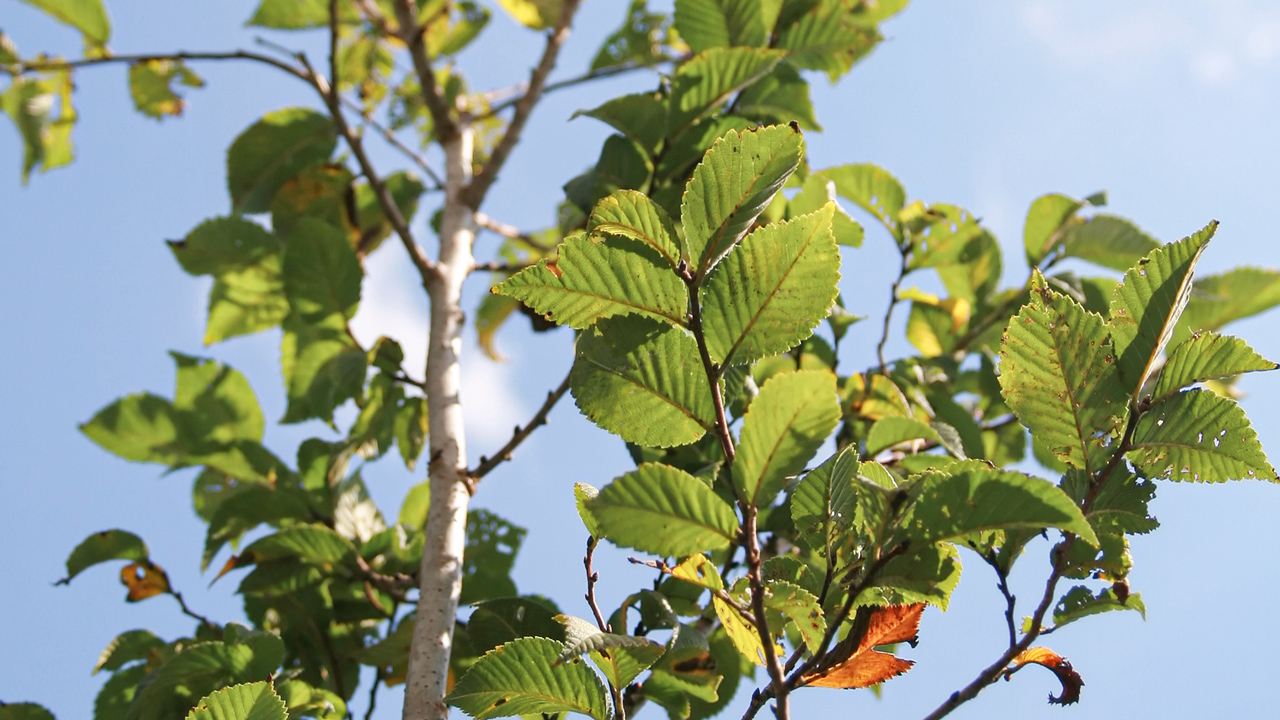
American Elm Hybrids
40-70 ft // full sun
The American elm was once the dominant tree species across the floodplains of the eastern and midwestern United States. Consequently, the introduction of Dutch elm disease to North America in the 1930’s has had a devastating impact on both natural and urban forest ecosystems. Thankfully, new hybrids – such as ‘Valley Forge’, ‘Morton’ Accolade™, and ‘Frontier’ – are resistant to the fungus that causes this awful disease. These hybrids have allowed city planners and homeowners to begin restoring the beauty and ecological benefit of the American elm to our urban forests.
Like oak, American elm is a primary or exclusive host for many moth and butterfly species. American elm also flowers and produces seed earlier in the spring than most other trees – a great benefit to bees and other pollinators as well as seed-eating birds and small mammals. Its aesthetic value as a beautiful shade tree in the landscape is appreciated by people too. One of our taller native trees, elm casts a lot of shade across its surroundings. Depending on the hybrid, fall color may be golden or reddish-purple. ‘Frontier’ adds another interesting texture to the landscape with its distinctive, textured bark which flakes away revealing a mottled mix of colors.

Serviceberry ‘Autumn Brilliance’
15-25 ft // full sun to part shade
If you’re looking for the perfect blend of ornamental beauty and environmental benefit, serviceberry might be it. Serviceberry is a small, understory tree native to parts of the eastern United States including eastern Nebraska, especially along the Missouri River. In April, drooping clusters of white blooms appear before the leaves do. In June, reddish berries replace the flowers and transform to a deep purple. The thick canopy provides shelter for nesting birds, and the summer berries are a favorite for all kinds of wildlife – humans too. If you can beat the birds to them, the berries make delicious jams, pies, and drinks, or can even be eaten fresh. In fact, serviceberry has been a historical food source for Native Americans as well. The cultivar ‘Autumn Brilliance’ gets its descriptive name from the glowing shade of red-orange its foliage takes in the fall.
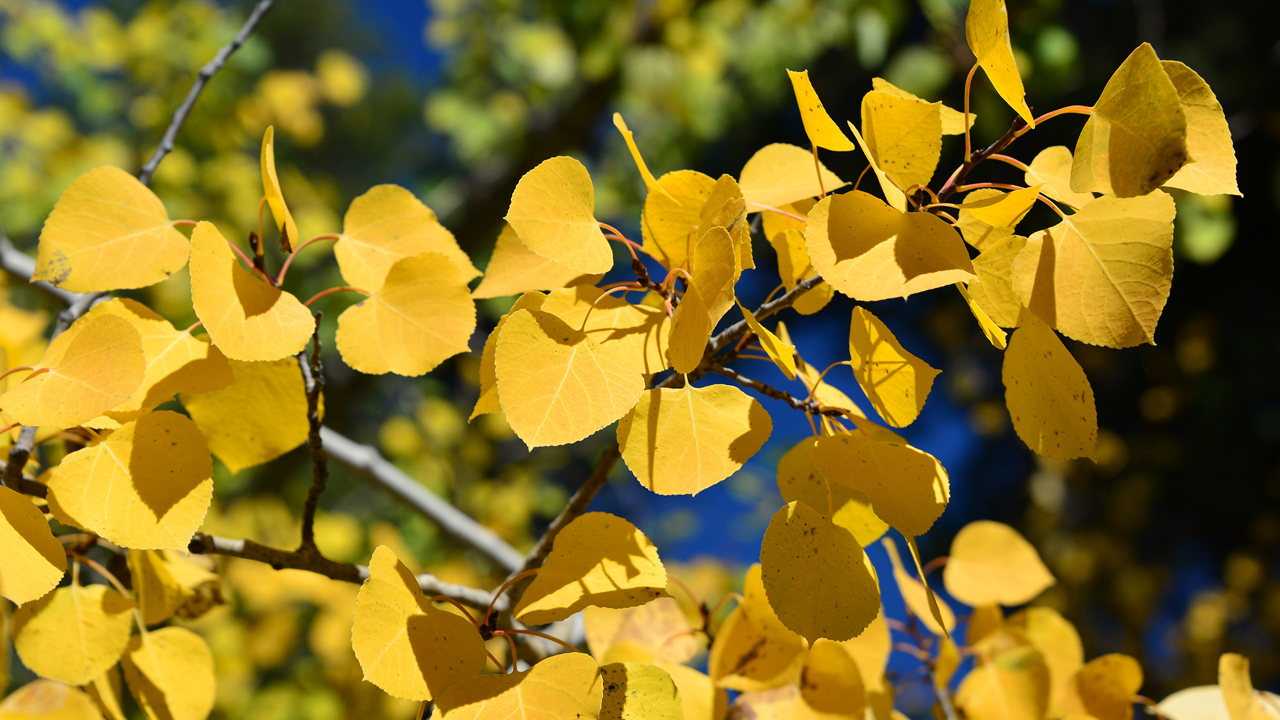
Aspen Prairie Gold®
20-50 ft // full sun
Quaking aspen is a much loved tree in mountain communities, and although we might not think of aspen as being a part of the flat, warm Great Plains, there’s a cultivar that does call Nebraska home. Discovered in Leigh, Nebraska, in the 1970’s, Populus tremuloides ‘NE Arb’ – or Prairie Gold® – gives Midwest gardeners a chance to bring home some of that mountain aesthetic. The cylindrical white trunk with its random black patches, the pointed oval leaves that twist and shimmer in the slightest breeze, and that amazing golden fall glow – they all enhance the beauty of both contemporary and nature-inspired landscapes. The local wildlife loves aspen too – a variety of large and small mammals, birds, and insects look for its leaves, twigs, and buds for food and shelter.
Kentucky Coffeetree Espresso™
60-80 ft // full sun
Standing over sixty feet tall, Kentucky coffeetree makes a definite statement in your landscape. To add to its commanding presence, Kentucky coffeetree has large, doubly compound leaves on arching branches that give the tree a unique look. Textured, gray-brown bark adds interesting visuals to the winter landscape. Kentucky coffeetree’s fragrant blooms are a favorite for pollinators too. And although Kentucky coffeetree is famous for producing large, dark brown seed pods that contrast with its golden yellow fall color, the exclusively male cultivar Espresso™ is seedless for a little tidier option.
Photo adapted from Tom Potterfield
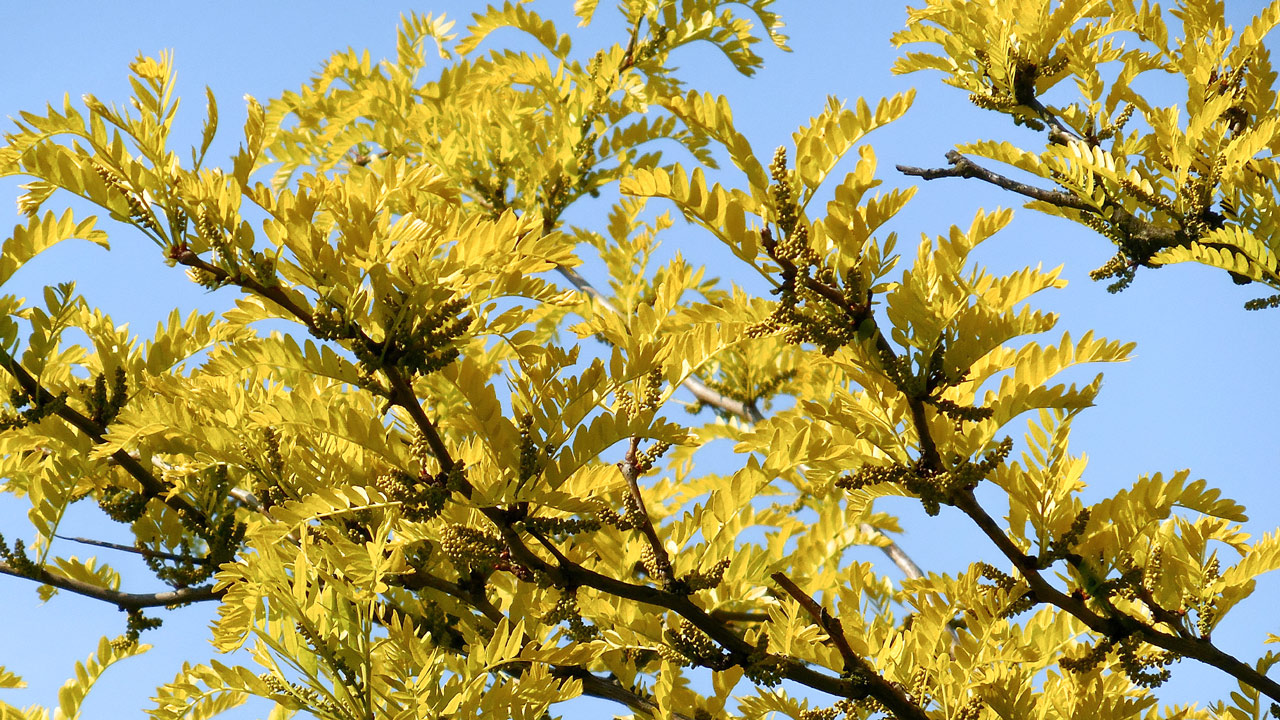
Honey Locust Skyline®
35-40 ft // full sun
The straight species of honey locust may be famous – or even infamous – for its gnarly thorns and abundant seed pods, but the cultivar Skyline® has neither. This beautiful tree has a lovely pyramidal shape, with its branching structure visible through the canopy throughout the year. And its singly and doubly compound leaves cast a light, dappled shade that’s not too overpowering to have a nice lawn underneath. The tiny leaflets turn a bright, sunshine yellow in the fall – and they’re so lightweight that gusty fall breezes may even whisk them away before you can find your rake.
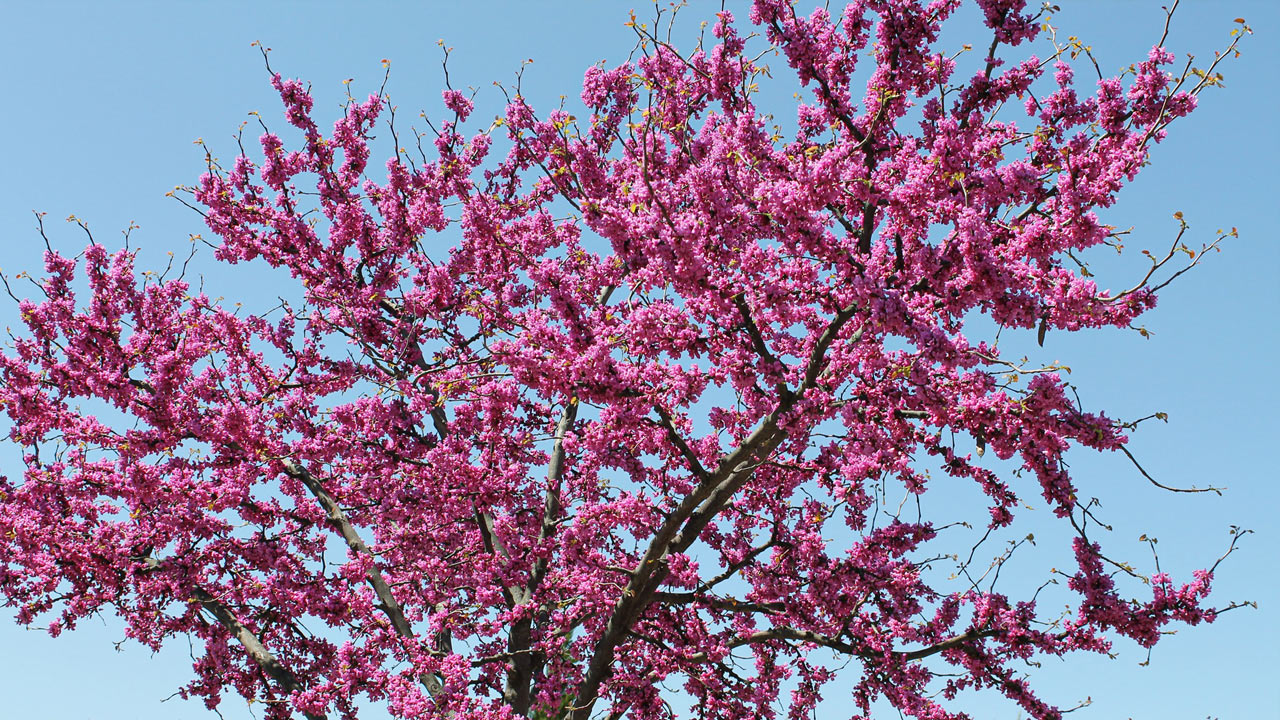
Eastern Redbud
20-30 ft // full sun to part shade
Chances are, you first noticed eastern redbud in the early spring when its clusters of rosy-purple blooms – a favorite of butterflies and bees – appear like a delicate mist throughout its dark, leafless branches. This relatively small understory beauty has heart-shaped, papery leaves that turn shades of yellow in the fall. And in the summer, it provides shade with a spread that’s slightly wider than its height. Eastern redbud looks right at home in clean, contemporary settings as well as naturalized areas either as a specimen or in groups along a wooded border or next to a patio.
Go Native
As you choose a new tree for your landscape, we hope you’ll consider a native tree first. Just think about the significant, lasting impact your choice could have on our local ecosystem. If you have questions about which tree would be perfect for your space and style, just ask. We’d love to help you find the right tree – one that both you and the surrounding community will benefit from for years to come.

